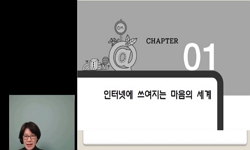This study conducted research on requests that appeared in the e-mails of native Japanese speakers, native Korean speakers, and Korean learners of Japanese. First, e-mails written by the two groups of native speakers were compared in which their advis...
http://chineseinput.net/에서 pinyin(병음)방식으로 중국어를 변환할 수 있습니다.
변환된 중국어를 복사하여 사용하시면 됩니다.
- 中文 을 입력하시려면 zhongwen을 입력하시고 space를누르시면됩니다.
- 北京 을 입력하시려면 beijing을 입력하시고 space를 누르시면 됩니다.
https://www.riss.kr/link?id=A106466722
- 저자
- 발행기관
- 학술지명
- 권호사항
-
발행연도
2016
-
작성언어
-
- 주제어
-
KDC
800
-
등재정보
KCI등재
-
자료형태
학술저널
-
수록면
43-63(21쪽)
- DOI식별코드
- 제공처
-
0
상세조회 -
0
다운로드
부가정보
다국어 초록 (Multilingual Abstract)
This study conducted research on requests that appeared in the e-mails of native Japanese speakers, native Korean speakers, and Korean learners of Japanese. First, e-mails written by the two groups of native speakers were compared in which their advisor was asked for a recommendation letter required for a student exchange program from the perspective of discourse structure and semantic formula. The result was that the written e-mails of both groups had similarities in that they were composed of a title, an opening, a main and a closing part. However, there was a huge difference in the usage of semantic formula. Next, e-mails written in Japanese by the Korean learners in which a recommendation paper was requested were compared with those of native Japanese speakers. As a result, it was found that the former (Korean learners of Japanese) included many semantic formulas that were not used by the latter.
동일학술지(권/호) 다른 논문
-
언어유형론적 관점에서 본 한일 양 언어의 부정명령문 연구
- 한국일본어문학회
- 박강훈
- 2016
- KCI등재
-
조선시대일본어학습서(朝鮮時代日本語學習書)의 조건표현(條件表現) -『첩해신어(捷解新語)』의 1차개수(次改修)를 중심으로 본 역접조건표현(逆接條件表現)-
- 한국일본어문학회
- 신충균
- 2016
- KCI등재
-
- 한국일본어문학회
- 이지수
- 2016
- KCI등재
-
韓國人日本語學習者の「イ形容詞」の 使用と敎師によるフィ一ドバックの影響 -4ヶ月間の初級作文資料をデ一タとして-
- 한국일본어문학회
- 曺英南
- 2016
- KCI등재





 KISS
KISS





